Using a food processor, this Rough Puff Pastry takes a fraction of the time and effort of traditional puff pastry, and produces a beautifully flaky, buttery result!
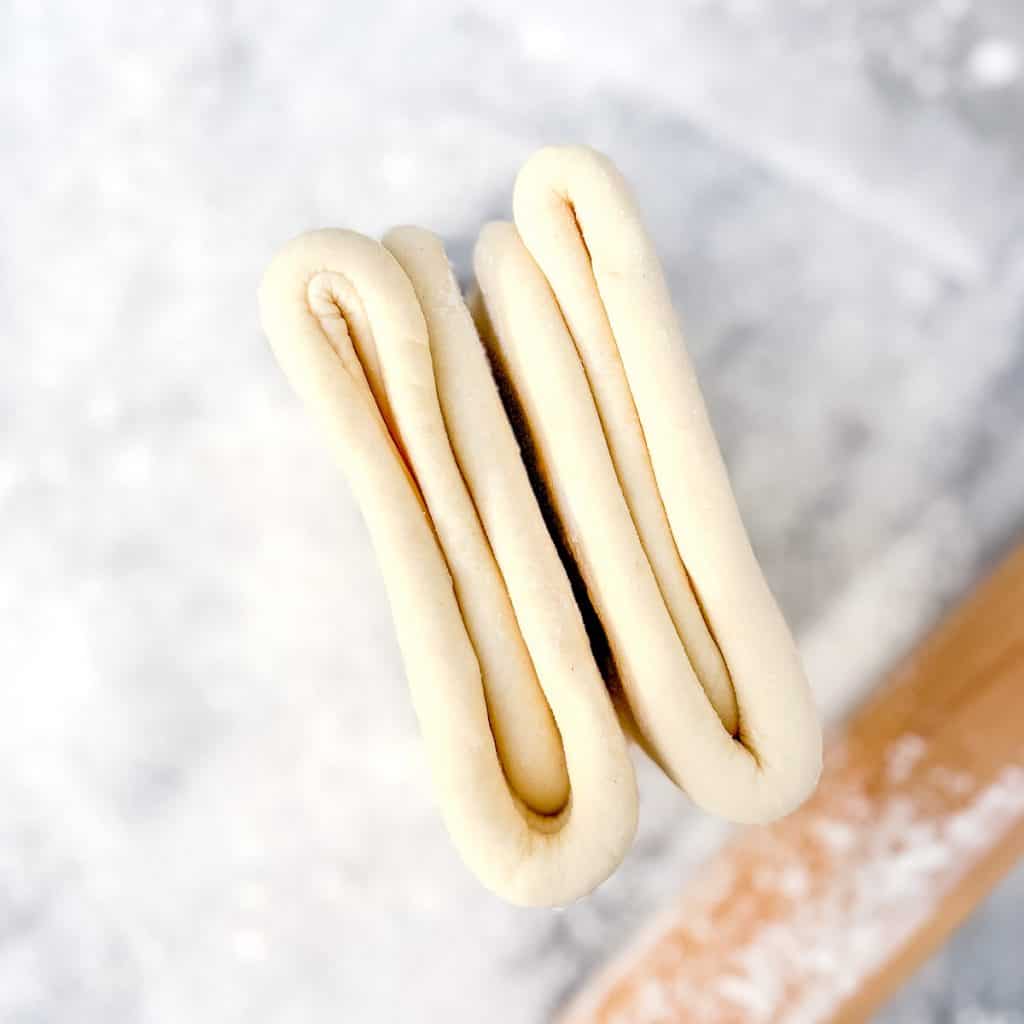
Save This Recipe! 💌
There are a lot of Rough Puff Pastry recipes out there, and I've tried a few, but this is the one I've used over and over, to great success. At one of my bakery jobs, we made a lot of crusts for pies and tarts, and one that was made in a food processor looked a lot like puff pastry after it was baked. I borrowed the food processor method then added in the folds you see in a true puff, and my results were fantastic!
Jump to:
What is Rough Puff Pastry?
Classic puff pastry is a light, flaky pastry made of alternating layers of butter and dough. It is made by encasing a slab of butter in a dough and rolling that out and folding it a set number of times in a process called "turning the dough" or lamination.
It also requires mandatory chilling and resting times in between the folds, to keep everything within a set temperature range. True puff pastry requires a lot of time, patience, and a certain level of skill. I have two of those things. I'll leave you to figure out which ones.
Rough puff pastry is also known as shortcut or cheater's puff pastry, and I'm fine with that. When you don't have a lot of time, patience, and/or skill (I'm still not telling) taking a shortcut is perfectly acceptable, and maybe even preferable.
Instead of using a slab of butter, rough puff incorporates pieces of butter directly into the dough. As you complete a series of folds (no chilling required) the pieces become smaller and flatter, and form layers within the dough, much like a true puff pastry.
Those thin pieces of butter in the dough act essentially the same way the thin lamination of true puff does. The heat of the oven hits the dough, evaporating the water in the butter into steam, pushing the dough apart into layers.
It's not going to be as meticulously layered as a true puff pastry, but, unless you're counting them, you probably won't even notice! The dough will puff and rise and have crispy, flaky, buttery layers, without all the work. Count me in!
❤️ What you'll love about this recipe
- AFFORDABLE - At the time of this writing, the most popular name brand frozen puff pastry costs an average of $4.99 and the ingredients for my rough puff pastry are $1.97. Math wins!
- EASY - Using your food processor, you can easily mix this dough in seconds. Following my simple instructions, you'll see that making your own puff pastry is within your reach!
- DELICIOUS - Once you taste your own puff pastry, you'll be amazed at how much more tasty it is than store bought! It's an especially amazing substitute for pie dough for recipes like my Peach Frangipane Galette.
Ingredients
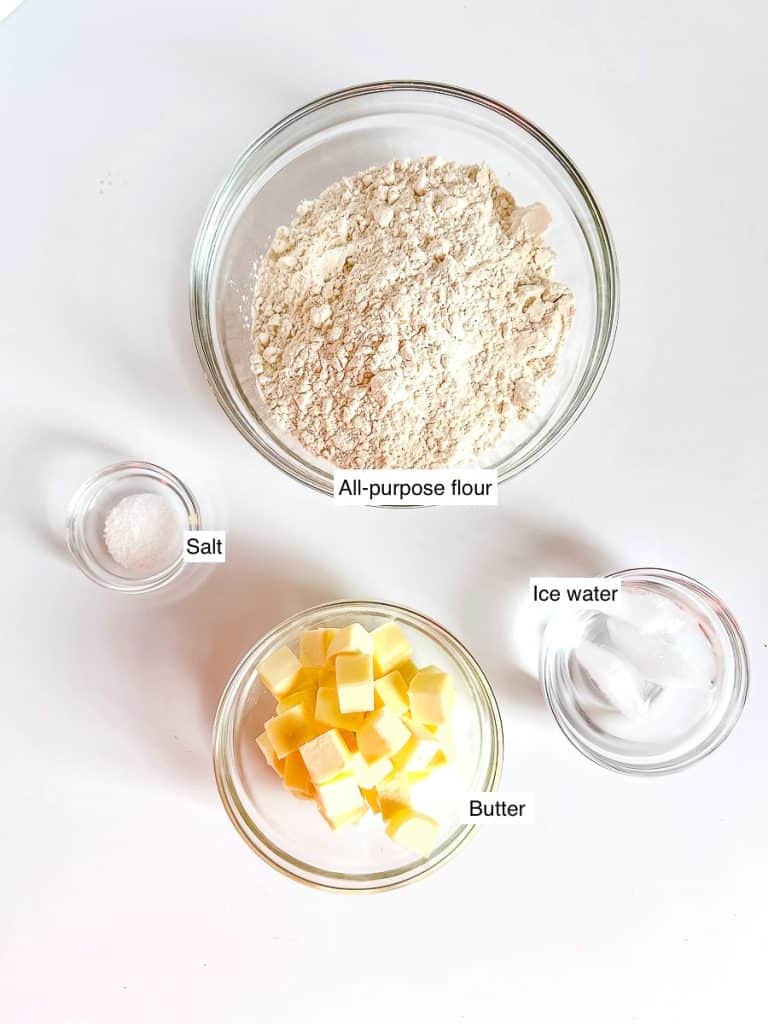
- All-purpose flour Regular all-purpose flour is all that you need. Some true puff recipes call for bread flour, but we are intentionally making a softer dough, to make a dough that is smoother and easier to work with.
- Kosher salt I use Diamond Crystal Kosher Salt because its crystalline structure has more flavor without being too "salty". If using Morton's kosher salt, use half the amount. I don't recommend table salt, as the flavor tends to be too strong for a simple recipe like this.
- Unsalted butter I always use unsalted butter in my recipes so that I have more control of the salt level in my recipes. I especially like it in my pastry dough because you can really taste the sweetness of the butter itself. In this recipe, you will use 4 tablespoons of cool or room temperature butter and the remaining 12 tablespoons frozen.
- Ice water I place water and ice in a cup and then dip in with my tablespoon to get the amount I need. This way I get the coldest water possible and keep my other ingredients cold as well.
Love flaky layers? Try my No Knead Croissant Loaf. A simple artisan bread that includes lamination techniques found in this puff pastry. Delicious!
Instructions
- Combine flour, salt and some of the butter Place the flour and four tablespoons of cool or room temperature butter into the bowl of your food processor. Pulse until the butter is completely incorporated and the texture resembles coarse breadcrumbs.
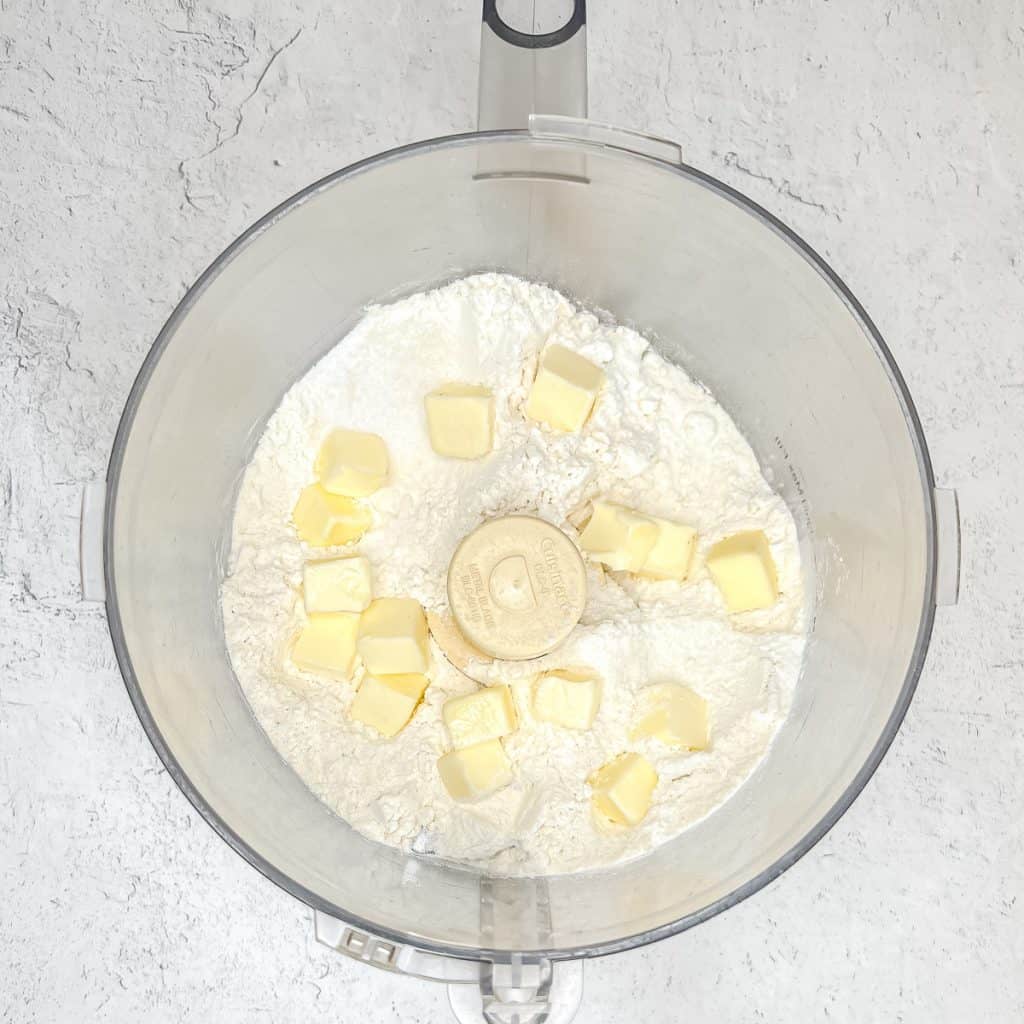
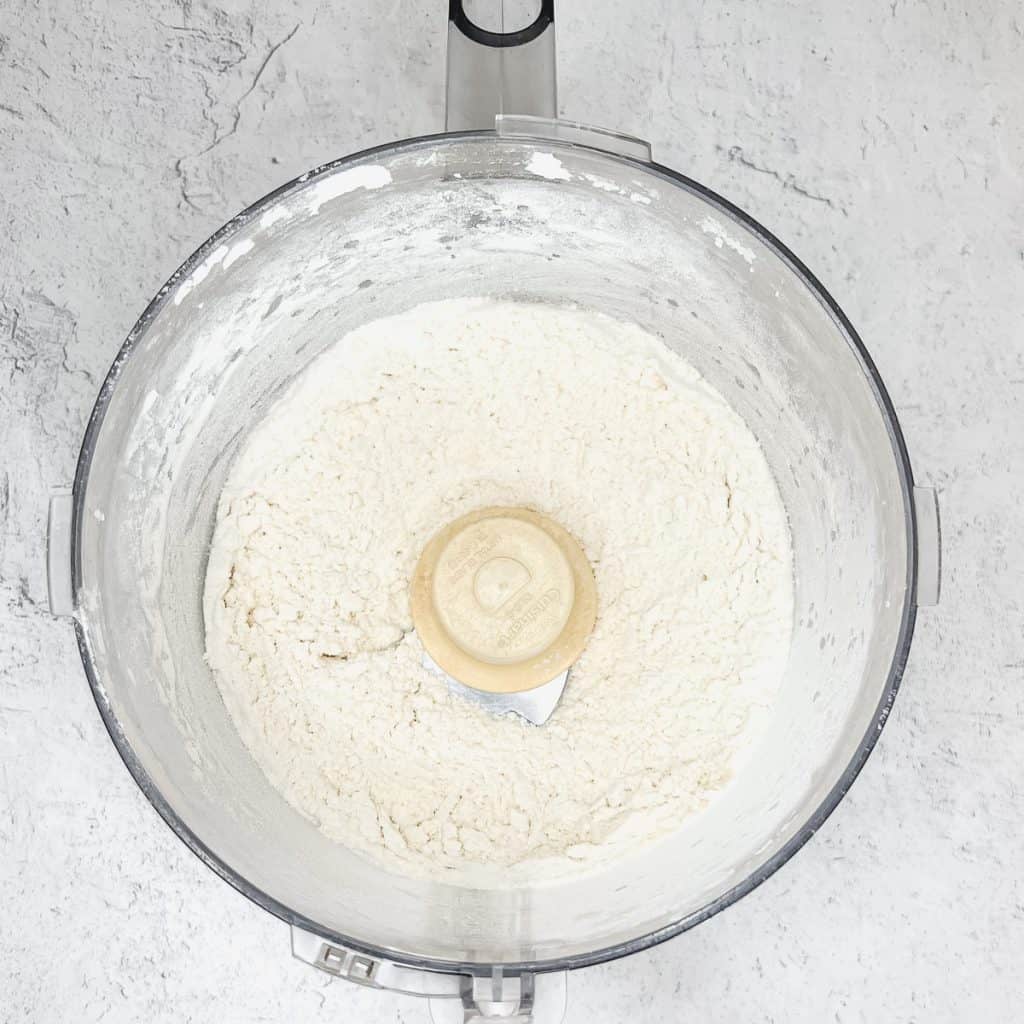
Note: The reason I have you fully incorporate part of the butter into the flour is because the fat helps break down the gluten into shorter strands (think of tender shortbread, which starts in a similar way). Coating the flour in butter also prevents the flour from absorbing too much of the water, reducing the formation of gluten, making the dough more pliable when rolling out.
- Add frozen butter and ice water To the flour/butter mixture add your frozen chunks of butter and pulse 4 times (each pulse one second long). Add in 3 tablespoons water and pulse 2 times. Add three more tablespoons of water and pulse 2 final times. It should look like the second picture below. If you still have a lot of dry flour, you can add one more tablespoon of water. The dough will not look like it is cohesive at all. That's just what we're looking for.
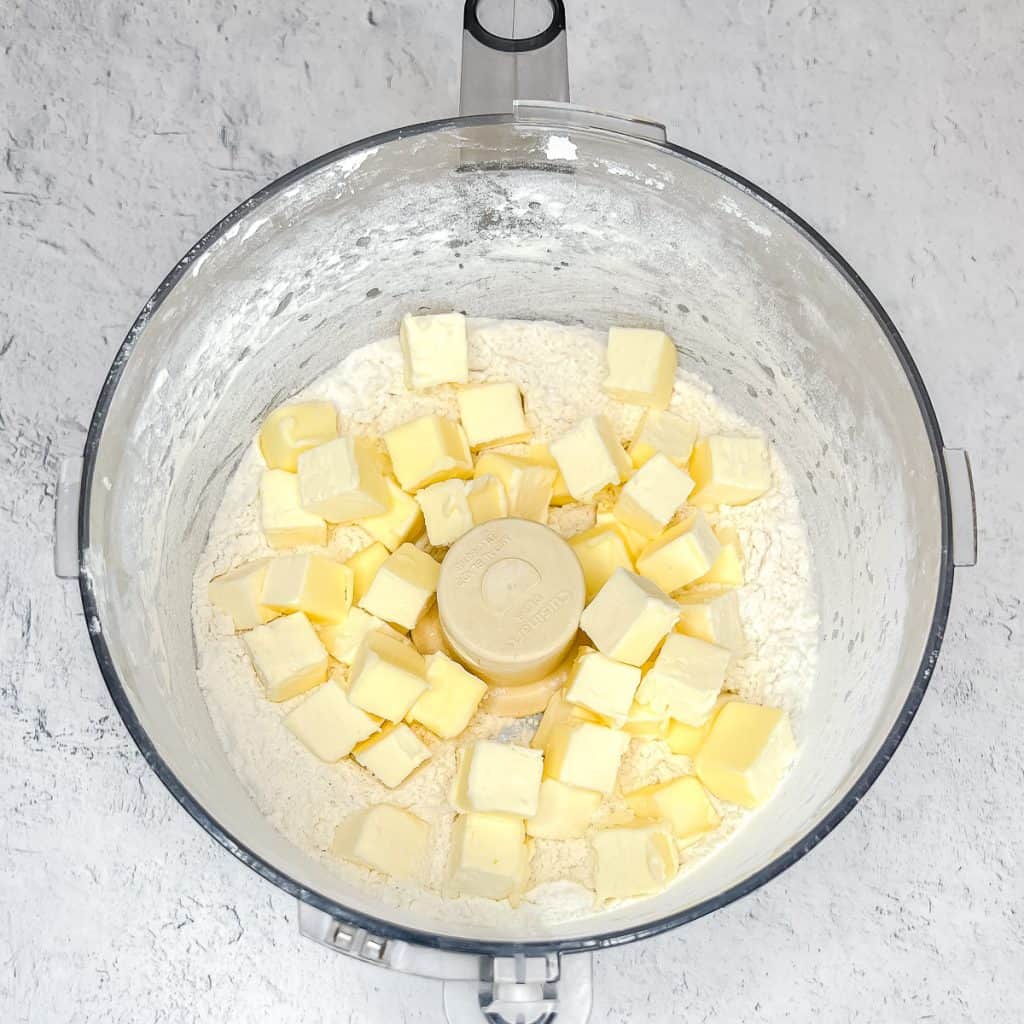
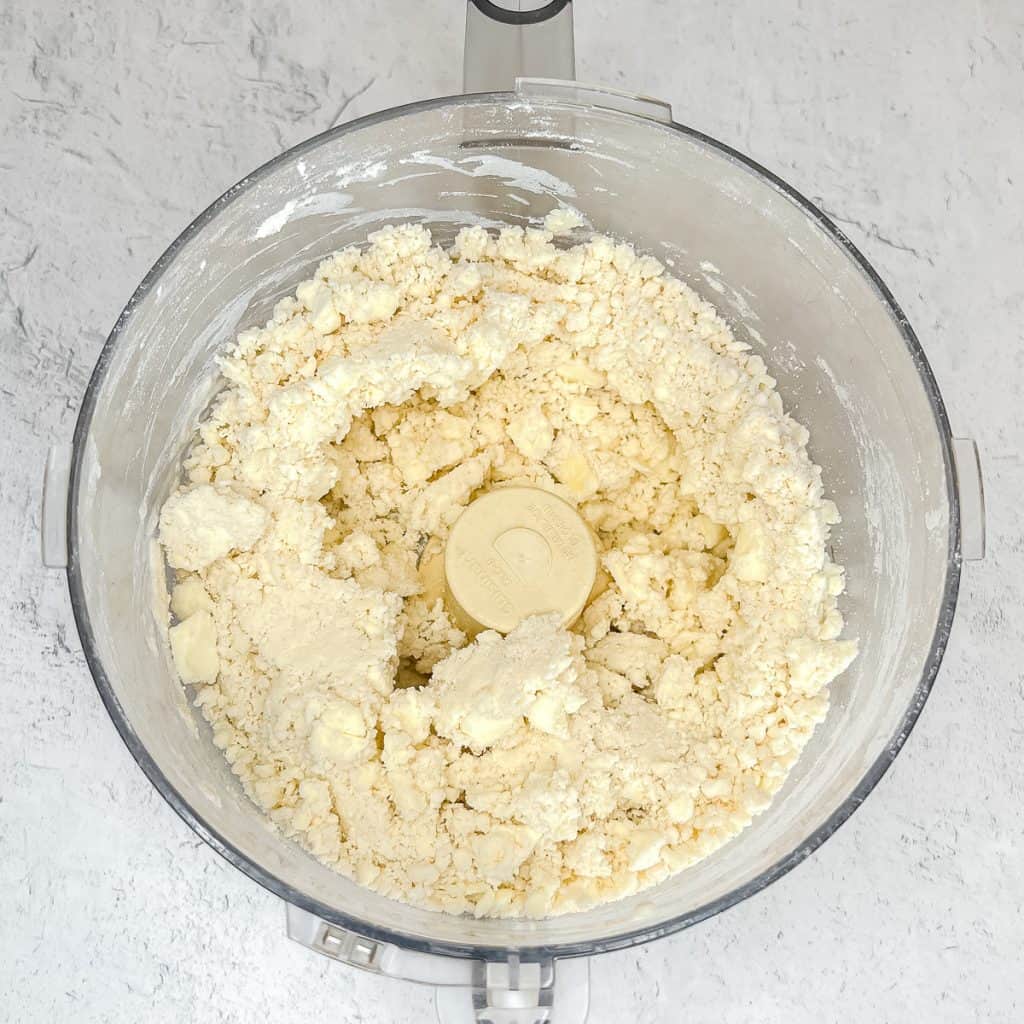
- Form into a dough Dump the contents of your food processor onto a lightly floured surface. Using a bench scraper and your hands, press and gather the dough scraps together into a one inch thick square. Wrap the dough square in plastic wrap and place in the refrigerator to rest for at least 30 minutes and up to one hour.
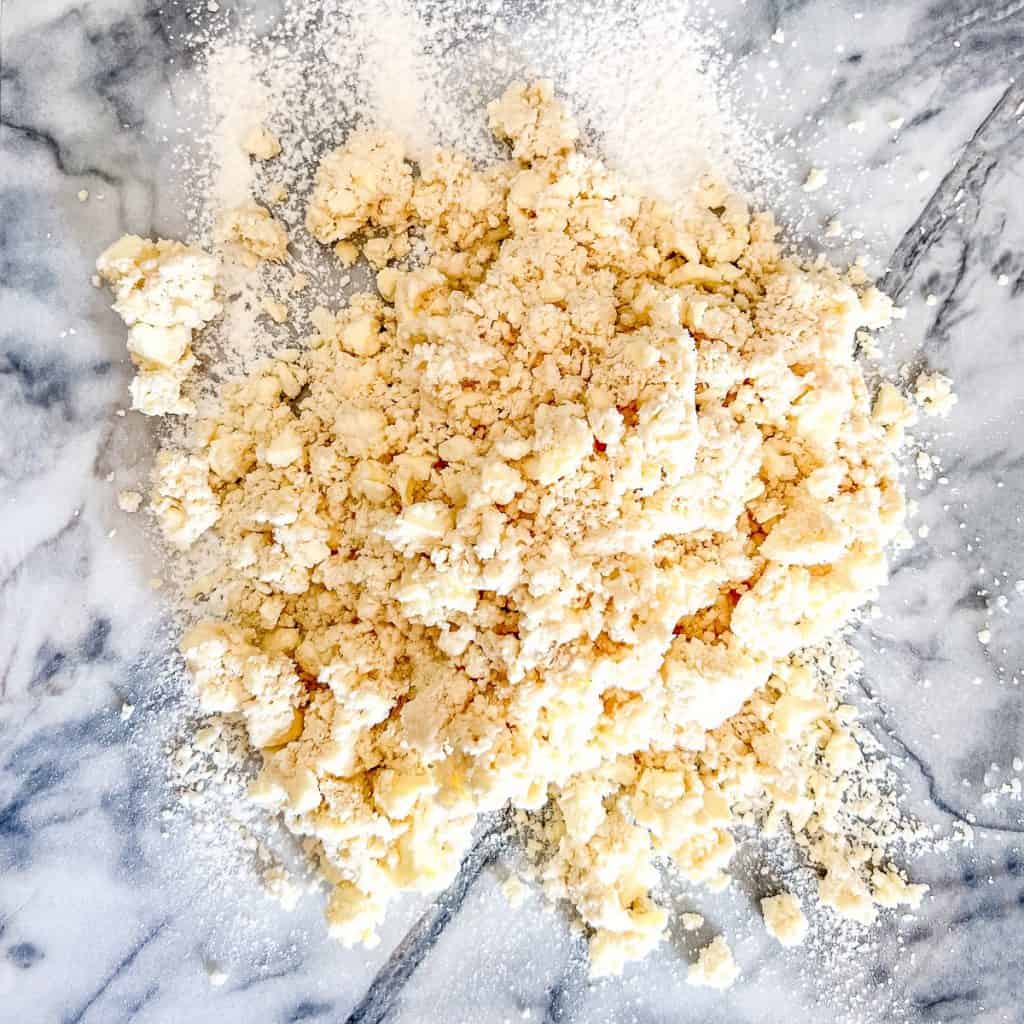
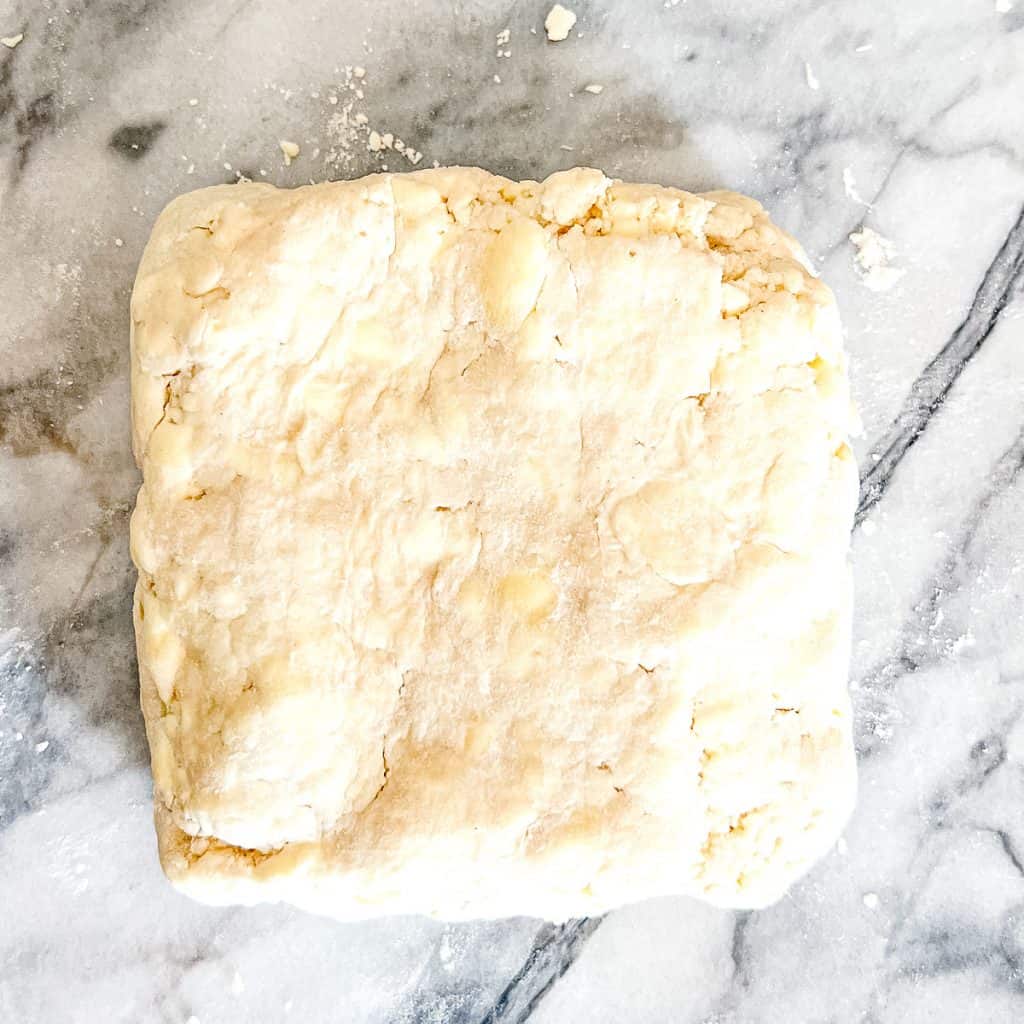
- Folding the dough Place your rested dough on a lightly floured surface. Using a rolling pin, roll your dough out to about a 15 inch by 6 inch rectangle. Exact measurements aren't vital, but the dough should be about ¼ inch thick. Use your bench scraper to keep the sides and ends as straight as possible. Fold the bottom third of the dough upwards, over the center. Bring the top third of the dough down, over the center, over the previous fold, like you are folding a letter. You have just completed your first set of folds!
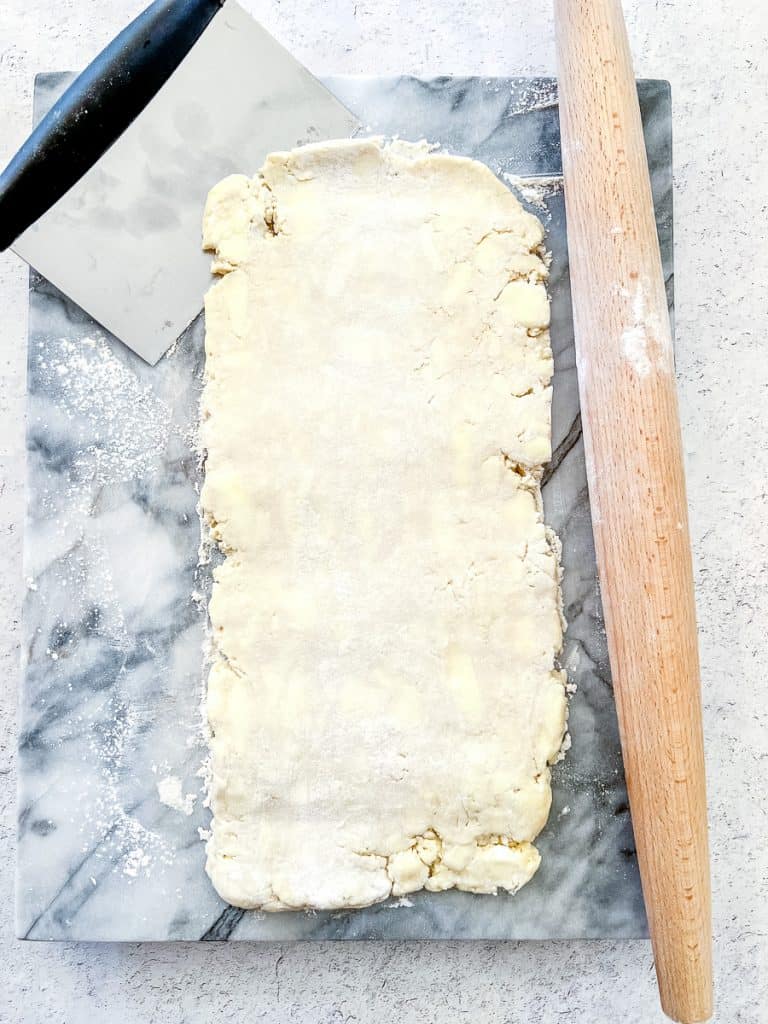

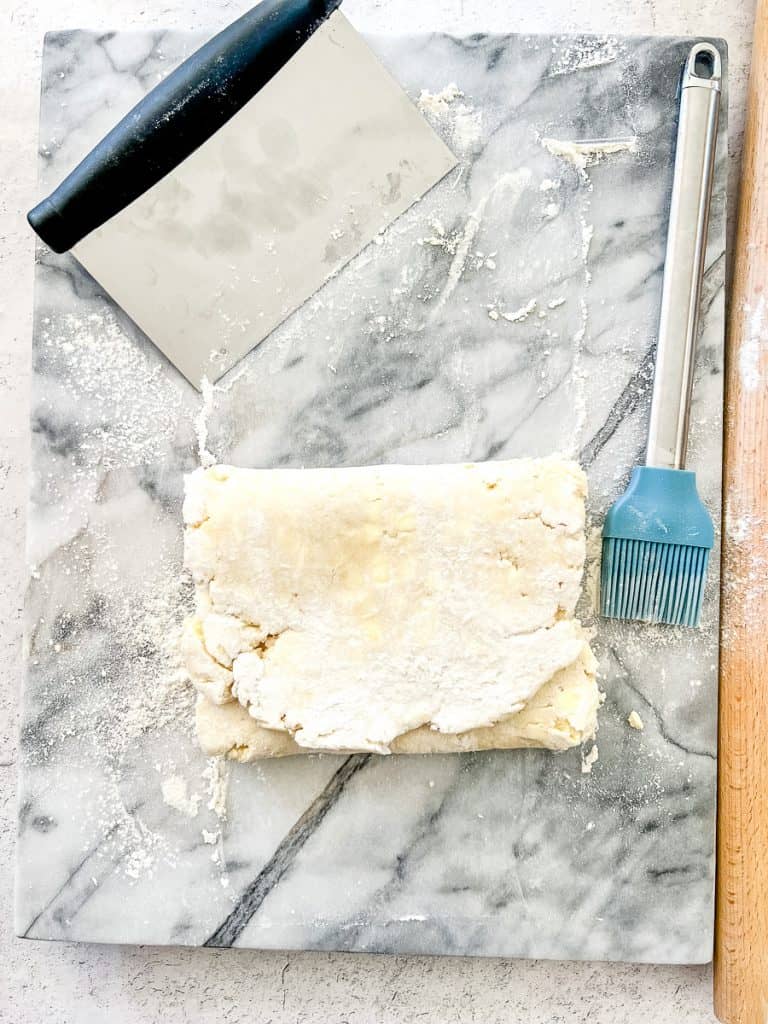
- Starting the next set of folds Turn the dough 90 degrees, so that the open ends are now facing up and down. Roll the dough out again to about a 15 inch by 6 inch rectangle and begin your second set of folds. You will do a total of 6 folds.
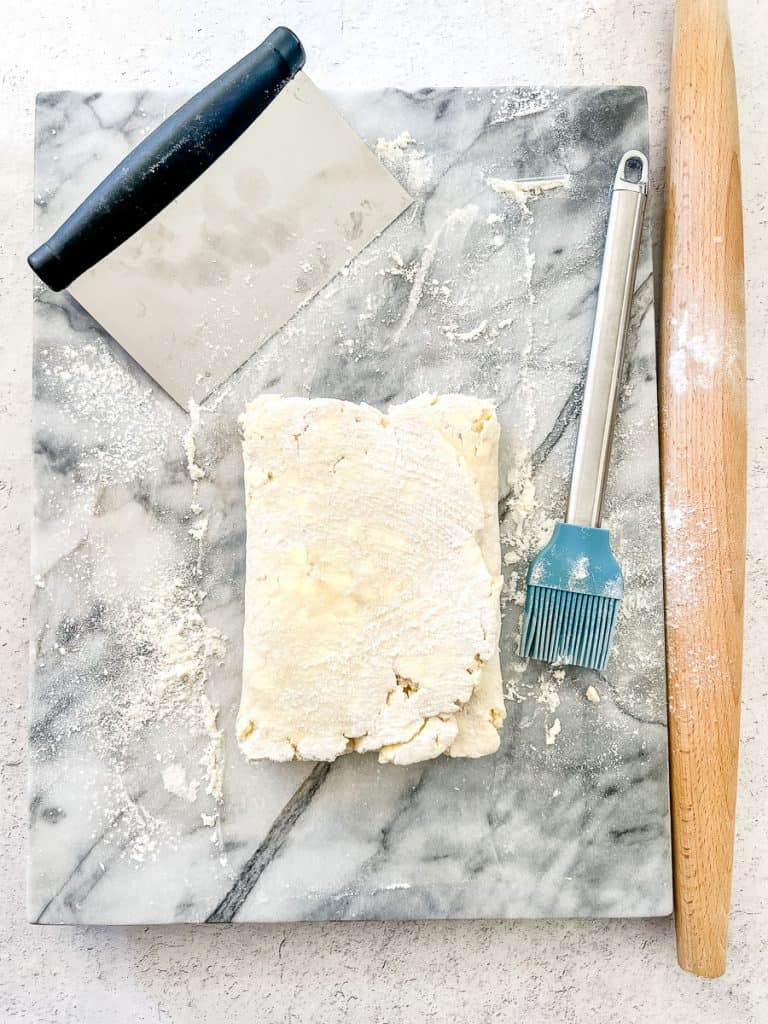
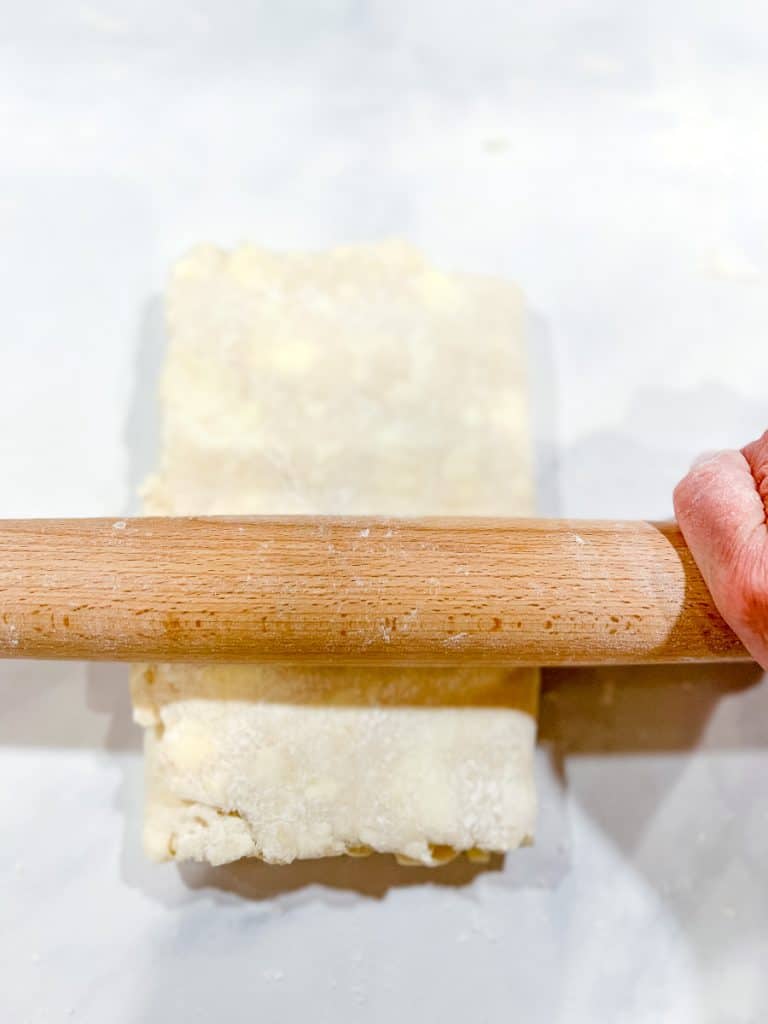
- Final folds Roll out your dough for a sixth and final time and complete your folds.
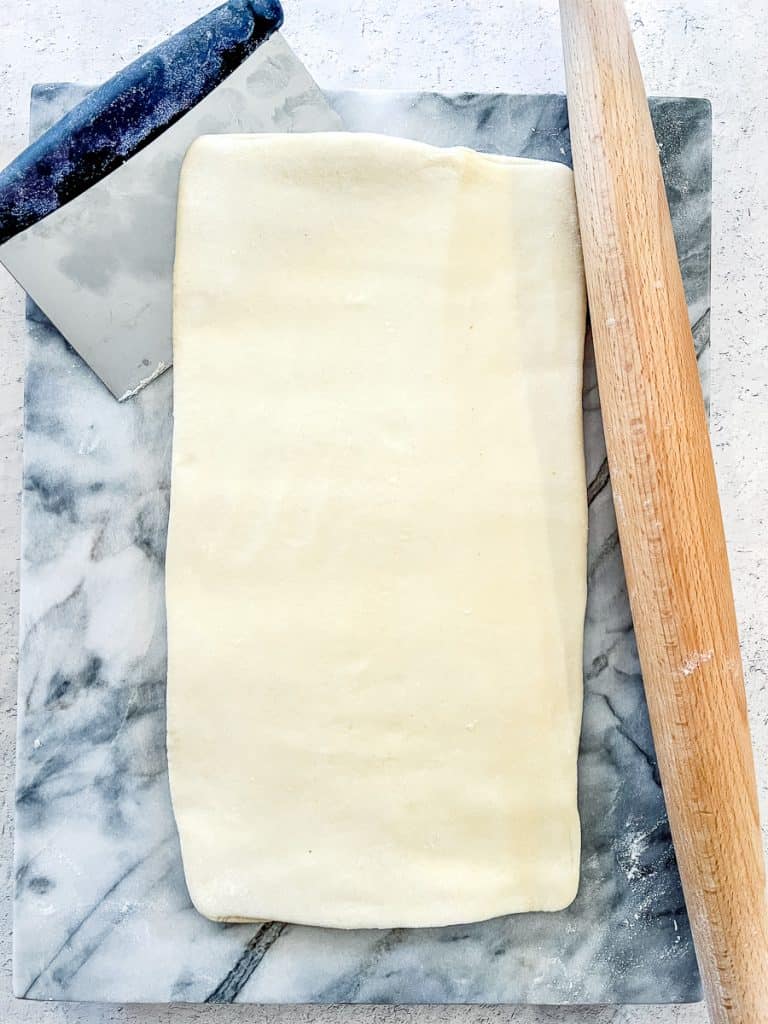
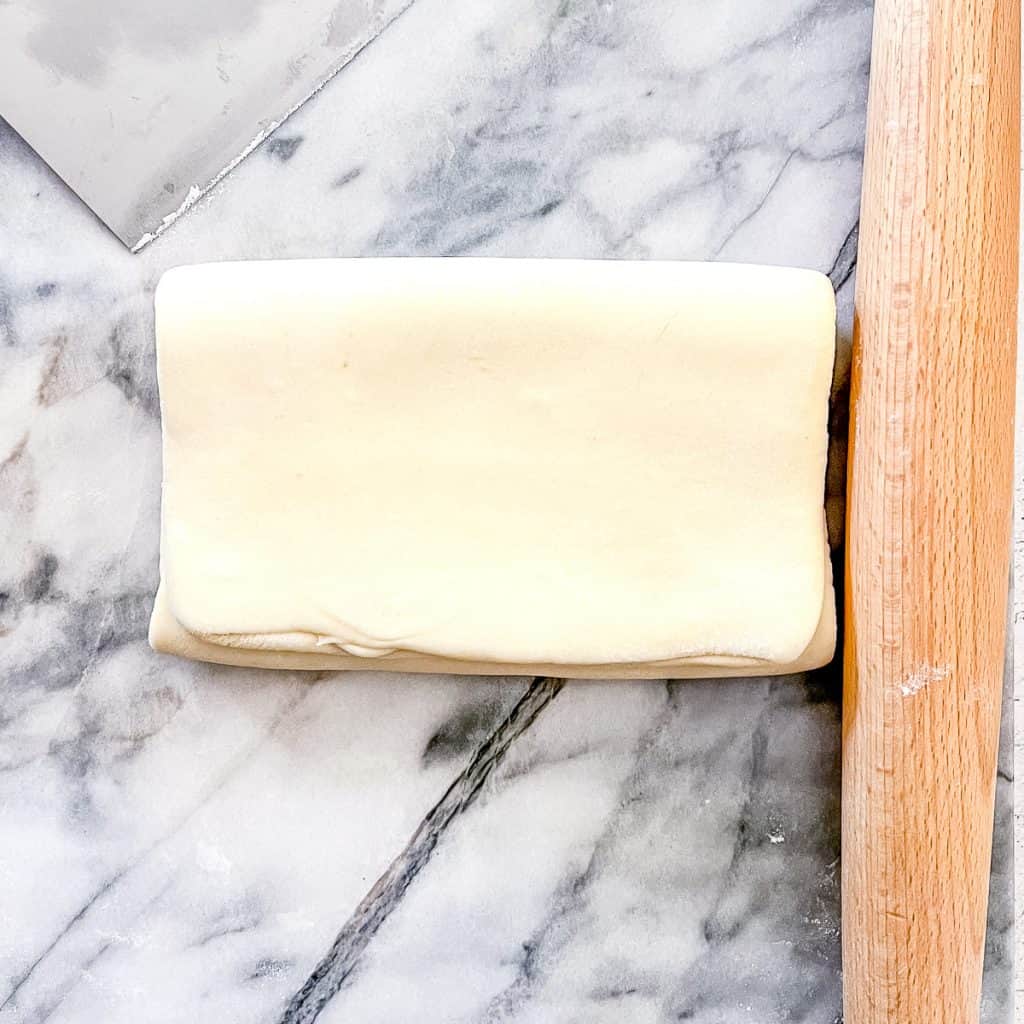
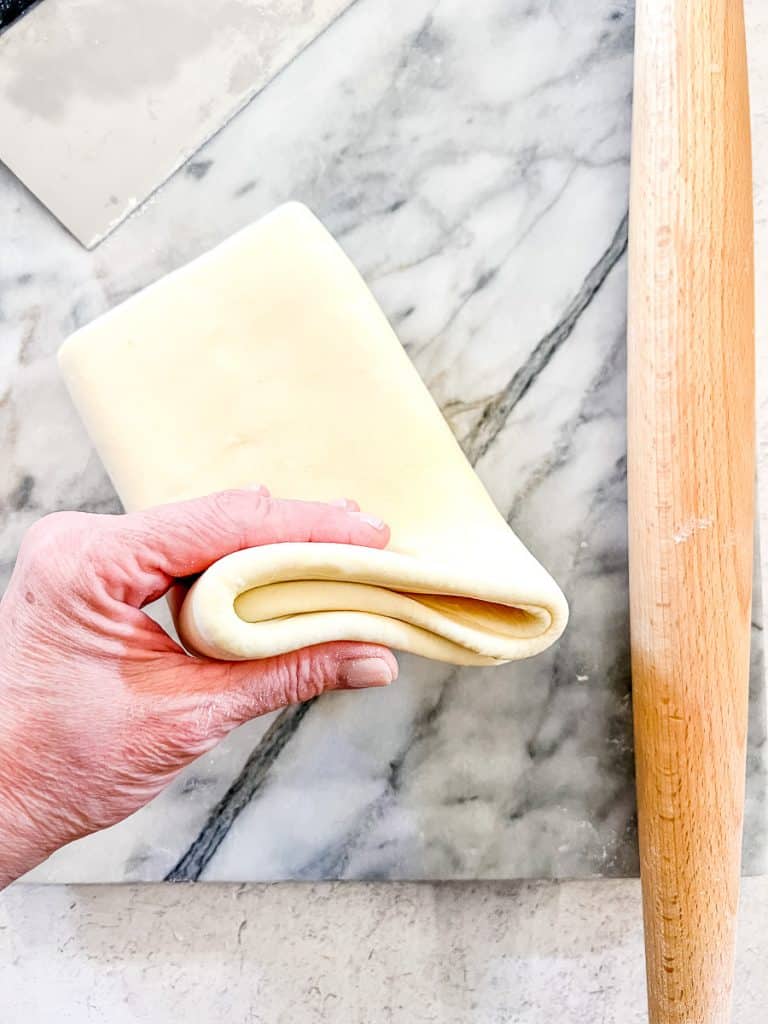
Expert tips
- If your dough feels like it is sticking to the board, just use your bench scraper to loosen it and sprinkle a bit more flour underneath the dough.
- If there are any butter pieces sticking out the sides of the dough, just tuck them into the middle before folding, to keep them incorporated.
- As you are going through the folding process, use a pastry brush to remove any excess flour from the surface of dough, so you don't incorporate it into the dough itself.
- If at anytime you feel like the dough is getting too soft, or just to play it safe, make a small indentation in the top of the dough marking which fold you are on (for instance, press three fingers lightly into the top of the dough after your third fold), wrap the dough in plastic, and refrigerate for 30 minutes before continuing.
- To keep track of which fold you are on (6 folds seems easy to track, but you'd be surprised!) place six pretzels or M&M's or other treats on the counter next to where you are working. Each time you complete a set of folds, eat a treat. Great Job!
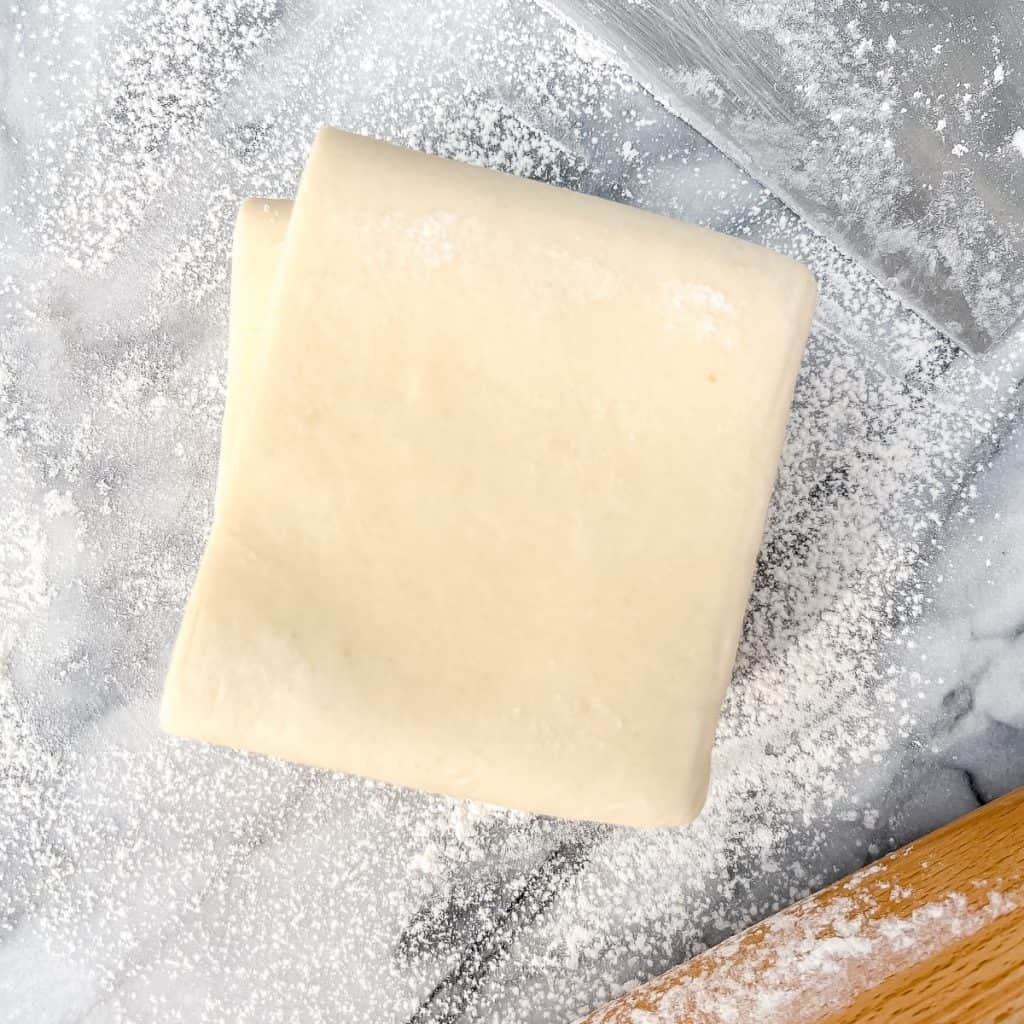
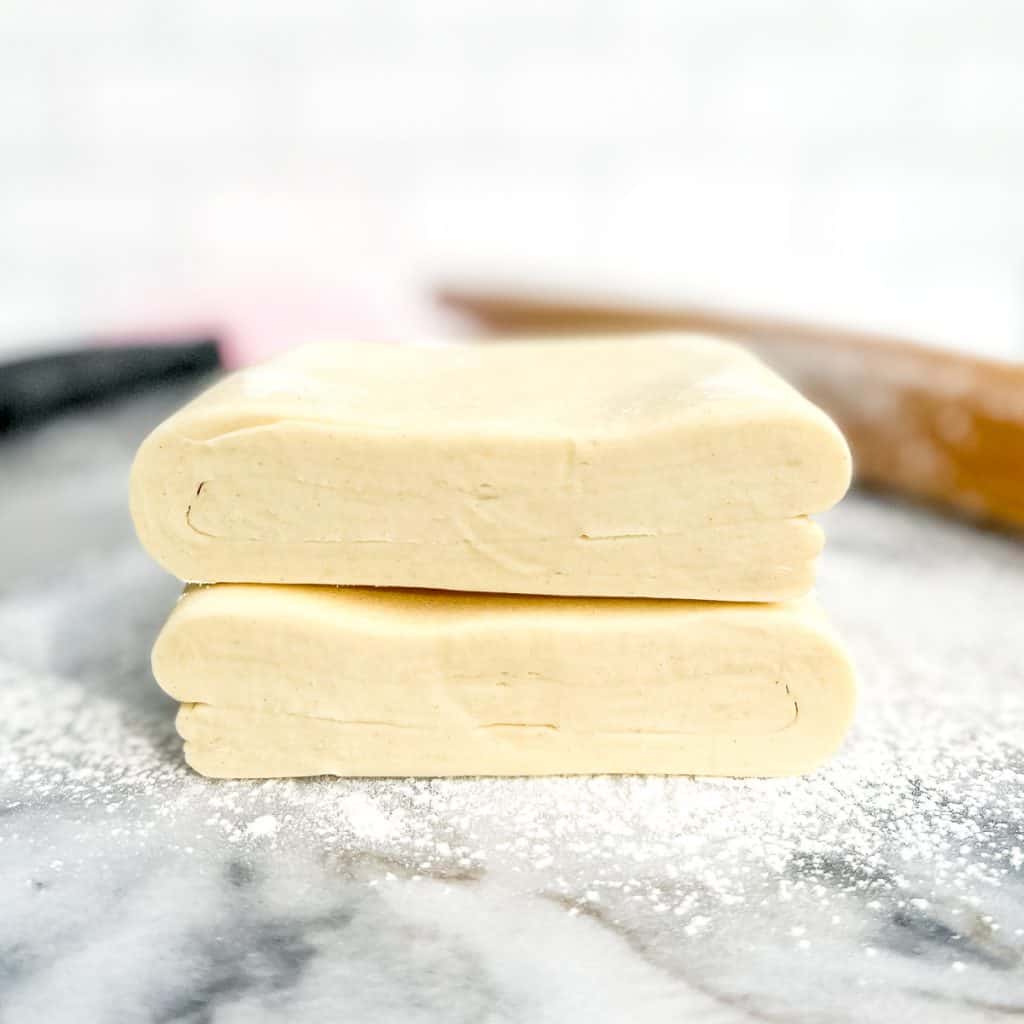
Storage instructions
Storage instructions: When all folds are completed, wrap tightly in plastic wrap and refrigerate for at least 60 minutes to solidify the butter. At this time, I usually divide my dough in half, wrap each half in a double layer of plastic wrap, and refrigerate until ready to use.
Freezer instructions: After double wrapping in plastic wrap, place your pastry in a freezer bag or double wrap in aluminum foil. Place in the freezer for up to two months. For best puff and flavor, use within 2 months. To defrost, place in the refrigerator overnight.
What can I make with Rough Puff Pastry?
Anything you can make with puff pastry, you can make with this Rough Puff Pastry. From tarts and galettes, to danishes and pot pies, it can do it all! One of my favorite things to make are simple French "cookies", like Palmiers and Papillons. These are made with puff pastry that is rolled out on top of sugar, folded, and sliced. When baked, the sugar caramelizes and you get a shatteringly crisp, sweet cookie.
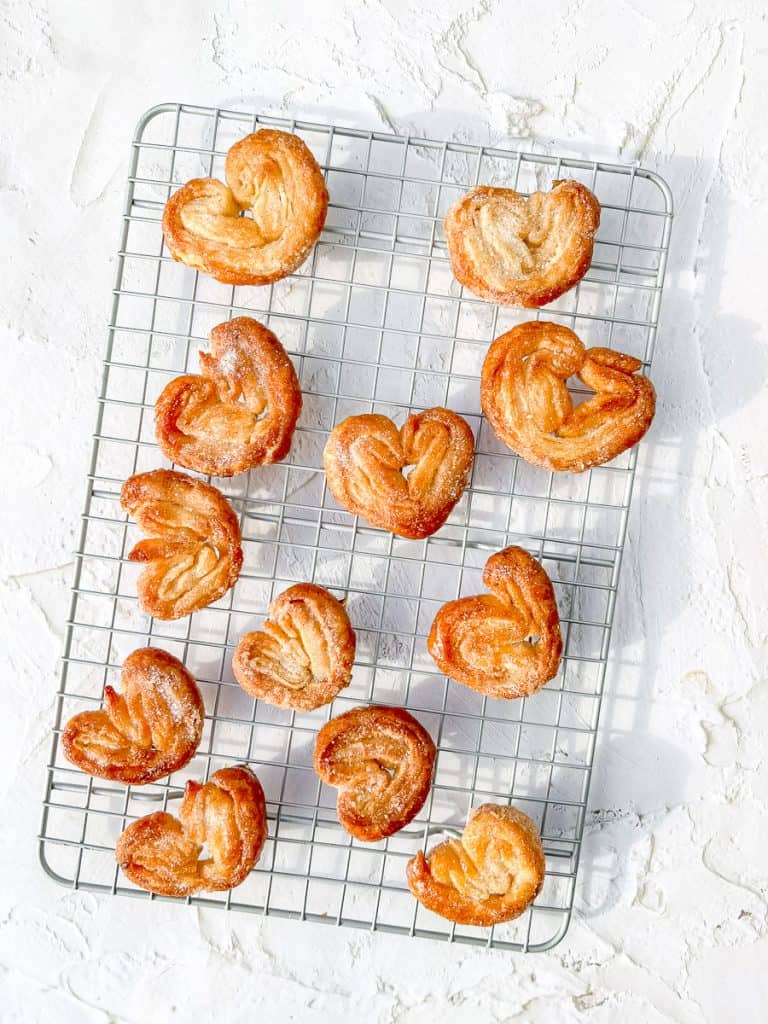
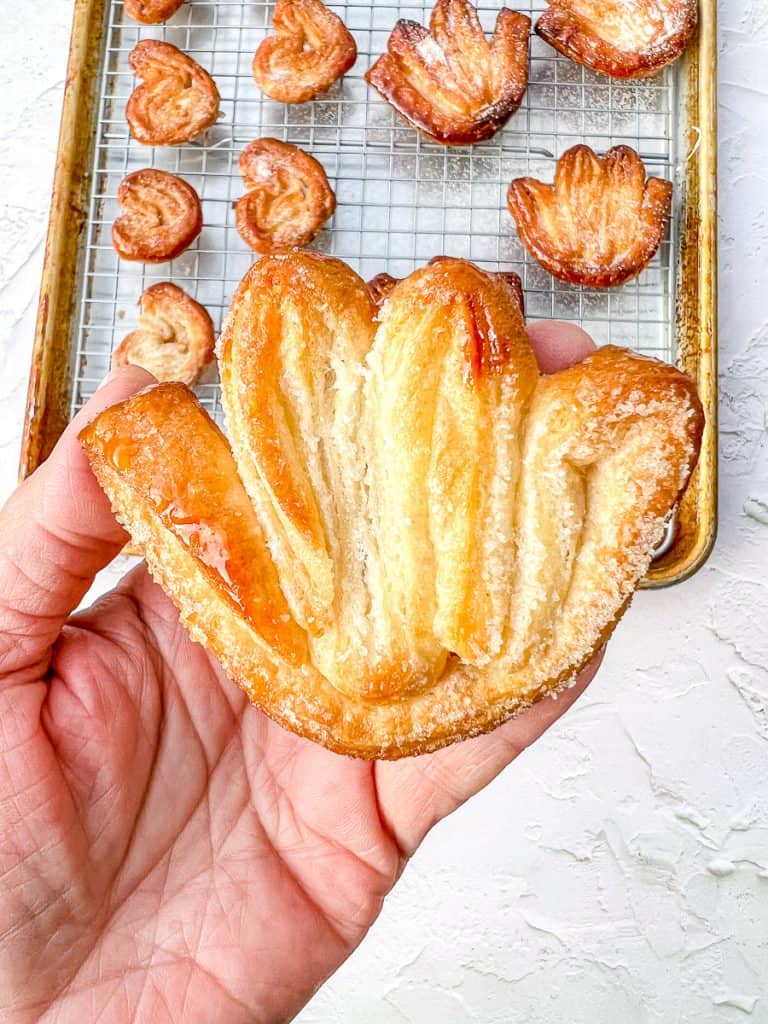
Looking for more dessert recipes?
📖 Recipe
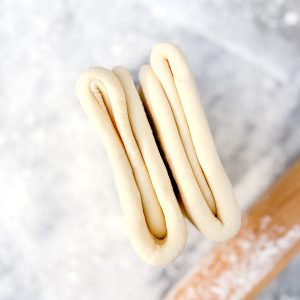
Quick and Easy Rough Puff Pastry
Ingredients
- 1 ½ cups (180 g) all-purpose flour
- 2 sticks (226 g) unsalted butter divided
- ½ teaspoon kosher salt
- 6 - 7 tablespoons (90 g) ice water
Instructions
- Cut 2 sticks (16 tablespoons) of butter into small pieces. Place 12 tablespoons into the freezer for 30 minutes. Leave the remaining 4 tablespoons out on the counter.
- Place flour and salt into the food processor and pulse to combine. Add the 4 tablespoons of unfrozen butter into the food processor and run until completely incorporated. Add frozen butter and pulse 4 times (1 second each pulse.) Add 3 tablespoons of the water and pulse twice. Add 3 more tablespoons of water and pulse 2 more times. If there is still a lot of dry flour, you can add one more tablesppon of water. It will not look cohesive or form a ball.
- Dump onto a lightly floured counter and press together into a 1 inch thick square. If there are little flour bits still at the bottom of the bowl, dump them into the center of your square and fold the dough over to cover them. Those bits will hydrate while you rest your dough. Press back into a 1 inch square. Wrap in plastic and refrigerate 30 minutes to an hour.
- Lightly flour your work surface and place the dough down. Sprinkle a bit of flour on top of the dough and on your rolling pin. Roll into a rectangle approximately 15 inches by 6 inches. Fold the bottom third of the dough over the center and the top third down over that. Each time you roll the dough out into a rectangle, fold up and then down, is a fold. This is your first fold.
- Turn the dough 90° and again roll out to a 15 inch by 6 inch rectangle. Repeat the folding process; fold the bottom third up and fold the top third down. This is your second fold. Repeat this four more times, for a total of 6 folds.


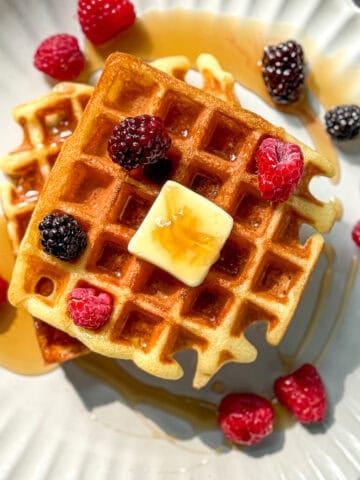
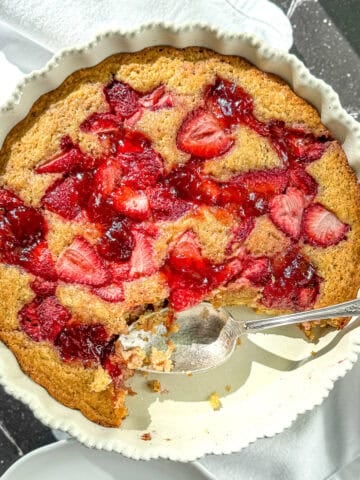
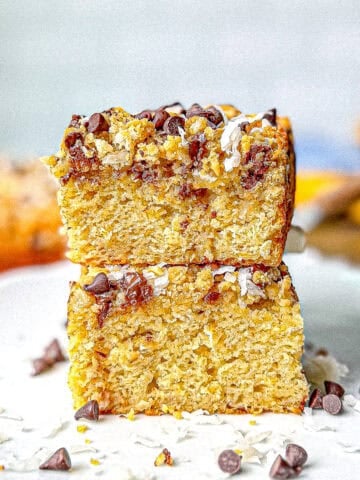

Comments
No Comments